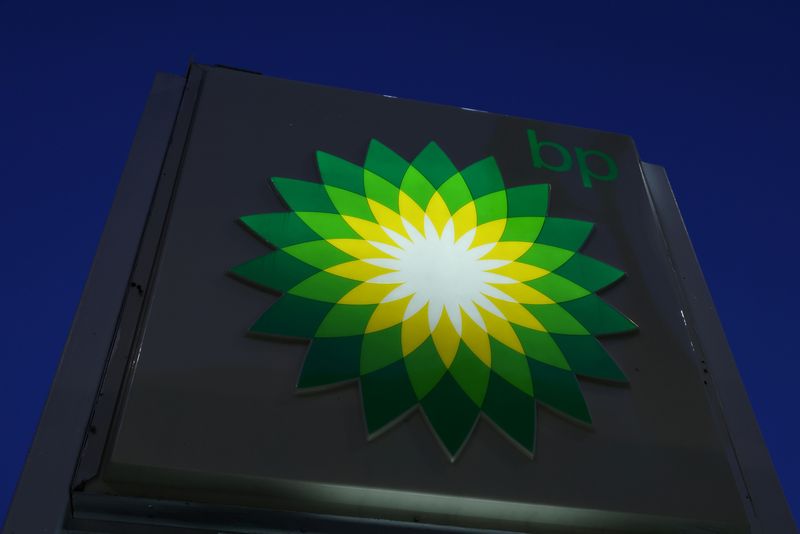BP-hydrogen fuel of the future
2022.12.05 01:27
[ad_1]

BP-hydrogen fuel of the future
Budrigannews.com – Executive Director BP (NYSE) Bernard Looney is betting on hydrogen as a fuel for low-carbon enterprises in the future, because the largest economic companies are investing in its development.
Low-carbon hydrogen is likely to significantly reduce greenhouse gas emissions from heavy industries and a number of vehicles. Low-carbon hydrogen already has a large fan base and fans. In any case, its creation is expensive and often requires state support in the fight against non-renewable energy sources.
For example, President Joe Baden’s law on reducing inflation at $430 billion provides significant incentives for its production. Thomas McLeod, who was recently appointed head of BP’s hydrogen gas production unit in the United States, told Reuters that the company is responding quickly and in the early stages of planning a project to build a large low-carbon hydrogen well around its refinery in Whiting, Indiana, a large low-carbon well.
Having taken office almost 3 years ago, Looney promised to reform BP and reduce carbon dioxide by increasing the use of renewable energy and reducing oil and gas production. “On February 7, updated information will be provided to investors about the current situation.” According to BP sources, an offshore wind and water installation will play an important role.
BP has updated the design to create a specialized hydrogen division under the management of Felipe Arbelaes with 150 employees. The company has also invested in many significant hydrogen projects, including Australia, Europe and Britain.
The company also told Reuters that it is also considering projects in Mauritania, as well as the possibility of creating “green” hydrogen in Oman. The company’s sources said that BP’s costs for low-carbon hydrogen remain moderate, but it is assumed that at the end of the decade, when the projects will work, they will grow to hundreds of millions of dollars.
According to Reuters, BP spent about a quarter of the 15.5 billion budget in 2022. dollars for low-carbon production, including the acquisition by the American biogas producer Arkaea for $ 4.1 billion. The company’s sources said that Looney, as well as the head of the renewable energy management of BP, Anya-Isabel Dozzenrat, will announce for the first time the goals of producing clean water in March.
The goal is to occupy 10 hydrogen markets in the “main market” by 2030. “Hydrogen will become the main concentration and it will move much faster than we never imagined,” said Murray Arshinkloss, financial director of Reuters. Most of the water used in the oil refining and fertilized industries is usually used for heating, this is a highly polluting process called “gray hydrogen”. However, the destruction of pollution turns gray water into “blue”.
There is also “green water”, which is obtained by splitting water by electrolysis, which runs on energy carriers. BP plans to build carbon generation plants in which carbon is pumped into depleted reservoirs to expand its blue water production business.
The company also plans to increase its capacity in the production of renewable energy sources by 50 GW by 2030, part of which will be used for electrolysis. BP did not say whether it would set the goal of producing hydrogen, and how much it would spend on hydrogen production. McLeod said that the BP project at the Whiting Refinery will initially use blue hydrogen to replace about 200,000 tons of gray hydrogen that the plant uses annually.
Green hydrogen can be added to the project in 2026-2027, when it can start working. She said that “our focus in the US, as well as in the world, is on how we clean up and revalue our assets.” At the second stage, other heavy industries in the region will use low-carbon fuels to reduce CO2 emissions by 36 million tons per year.
A subsidy will be used to complete the project, highlighting the difficulty of competing with more expensive fossil fuels. Analysts say that the price of green water is comparable, and maybe lower than gray or blue, thanks to the IRA tax benefit of $ 3 per kg. McLeod said that “green hydrogen turned out to be much more competitive than the tax incentives for water production that are in effect now.” McLeod said that subsidies will primarily allow green, blue and gray hydrogen to compete with gray hydrogen and allow consumers to switch to cleaner fuel resources.
Andy Bragan, EY’s global oil and gas market leader, said: “The growth in the consumption of new types of hydrogen depends on the competitiveness of prices.” Brogan said: “Hydrogen is the only obvious technologically viable alternative to carbon options for material energy consumption.” However, they require significant time expenditures, so the rapid increase in speed depends on the costs.”
Among the world’s largest oil and gas companies, BP is already one of the largest investors for hydrogen projects, including Shell, Repsola, Total Energys OTC, Eni, according to data provider Globaldata.
BP in June acquired 40.5 shares in an Australian renewable energy project with a capacity of 26.5 GW, which can produce environmentally friendly hydrogen products. By 2030, the company plans to produce 1 5 gigawatts of blue, green and blue hydrogen at two UK projects.
[ad_2]








